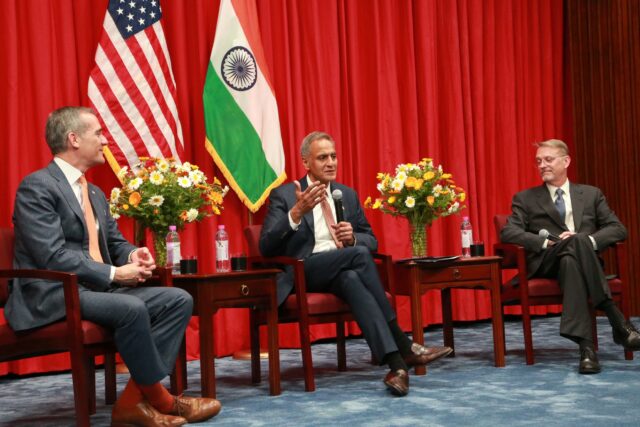“…Every culture embraced the necessity of war as places were conquered, as people suffered, histories that were never written,” US Ambassador to India Eric Garcetti noted at an India-US Defence Partnership summit in Delhi on Tuesday. Titled Indus-X 2024 Summit: Innovations in India-US Defence, it saw comments by key figures invested in the bilateral defence partnership.
Richard Rahul Verma, former US ambassador to India and currently deputy secretary for management and resources, touched on the roadmap laid down by the two sides that has identified key capability areas for co-production and integration of supply chains. It has also established a bridge between the US and Indian private sectors.
But as he noted, “We could do more in intelligence sharing and we certainly could do more in the maritime domain and we need to do more in co-production and we need to do more in advanced technologies. But overall, our relationship sends exactly the right signals to both our friends and adversaries around the globe. For India, I would like to say, India has a strong and willing partner in the US.”
“The defence trade that we conduct has vital consequences for both our countries’ interests,” said Michael J. Vaccaro, Deputy Assistant Secretary of State for Defense Trade Controls in the Bureau of Political-Military Affairs. He noted that since 2013, the US has authorised over $15 billion in direct commercial sales to India. This includes the manufacture of GE F414-INS6 engines which, at $1.8 billion, is one of the most major defence deals between the two countries and even within the Indo-Pacific region.
There was also the web of defence pacts such as LEMOA, which allows the two countries to use each other’s bases for repairs and replenishment, COMCASA, which provides for both interoperability and sale of high-tech technology from the US to India and BECA, which includes the sharing of high-end military tech, logistics and geospatial maps.
Justin McFarlin, Deputy Assistant Secretary for International and Industrial Base Development & Engagement at the US Department of Defense, argued that the nature of warfare had brought home some new ground realities that no one in the defence sector could afford to ignore.
With reference to the Ukraine war, he said startups in India and the US needed to focus on munitions and “contested logistics.”
“After Covid, we have seen a change in the nature of warfare. The message is that while technology is great, production is deterrence. If we are not producing enough for our fighters to use then we are not doing enough to deter the enemy. So rather than only look for new solutions we must also look at existing platforms to see how we can achieve that.”
Indus-X was launched last year by Prime Minister Modi as a key trigger for defence innovation backed by the US Defense Department, US India Business Council (IBC) and the Society of Indian Defence Manufacturers (SIDM). Looking ahead, it could be crucial for developing ways to deter China.
















